Today is the autumn equinox. This means that the night and the day are equal in length, and that from now on the days will get shorter, and the nights longer.
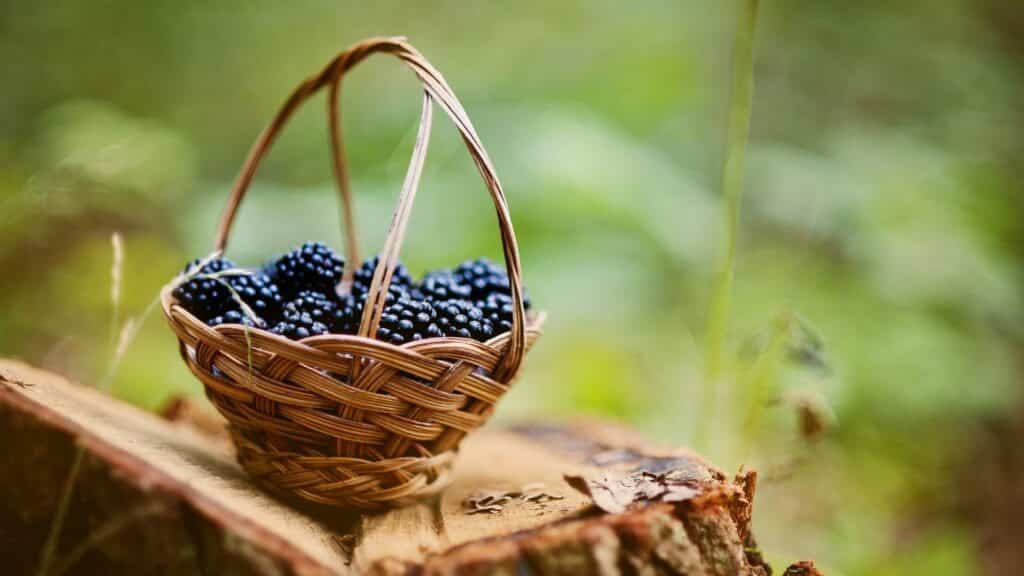
The equinox was a special time for our ancestors. The equinox represented balance in life, the end of a (hopefully) bountiful harvest season, and the approach of winter. This was, and still is, a time to be thankful for the summer and prepare for the colder months. So, what better time to celebrate natures bounty and go foraging! Here are 7 species to look for:
BlackberriesHumans have been hunting for these delicious berries for thousands of years. Blackberries are easily recognisable and can easily be found buried within bramble hedgerows. These berries are really high in vitamin C and can be plucked straight from a bramble and eaten. If you can get them home without eating them, you can make them into sweet pies and crumbles, jams and jellies, and even wine! Blackberries are instantly recognisable and can be found on brambles in hedgerows, woodlands, and even growing at the side of roads. You can pick them throughout autumn. | 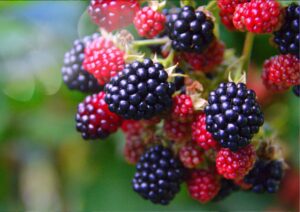 |
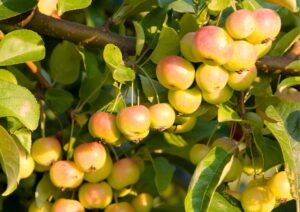 |
Crab applesCrab apples are one of the many varieties of apples you can find in the UK. However, unlike eating apples, they have a very sour taste. Despite this, and thanks to a liberal amount of sugar, crab apples make lovely bright reddish orange jams and jellies. Crab apples have a high pectin content too. So, if you add them to other jams and jellies, they’ll help them to set. Crab apples are found in hedgerows, woodlands, and parks. The apples are ready any time throughout autumn, look out for them changing colour to reds and oranges. |
ElderberriesElderberries are another instantly recognisable autumn berry. These berries are a vitamin and antioxidant filled fruit, and a common ingredient in liquid and chewable vitamins. People have been foraging for elderberries for generations, and many families have their own top-secret cordial and wine recipes. You can also make pies and crumbles, or jams and jellies. Elderberries are another woodland and hedgerow find. Wait until the berries are a dark reddish-black before harvesting. | 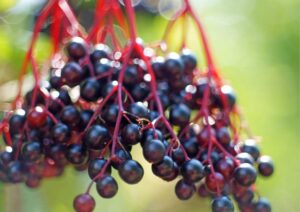 |
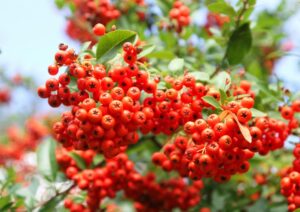 |
Rowan berriesThese berries grown on the rowan tree and are full of vitamin C. When raw they are inedible due to their taste, but like most berries, they can be made into delicious jams and jellies. Unlike other jams and jellies rowan jam is a traditional accompaniment with game. You can find rowan trees and their bright red berries in many green spaces and hedgerows, and they are often mistaken for ash (hence their nickname of mountain ash). Rowan trees are also often be found around old dwellings, as they were thought to protect people from witches. |
RosehipsIf you don’t remember foraging for edible rosehips, there is a good chance you might have used them for something else. These seeds and their hairs have a maddeningly itchy effect when thrown down the back of a school shirt! Other than school pranks these immune boosting seeds are great for keeping winter colds away. Rosehips make cordials, wines, syrups, jams and jellies. Look for the bright red rosehips in autumn, where they’ll be nestling in hedgerows. It’s a good idea to take scissors or pruning shears, and to wear gloves so that you can avoid the itchy hairs and rose thorns. | 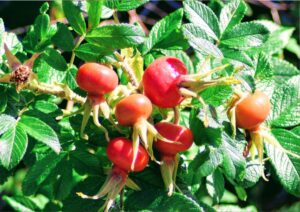 |
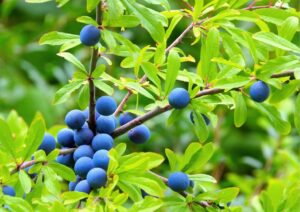 |
SloesSloes are well known for their use in gin and cordial. But this blueish purple berry can be used to make jams and jellies, or even sloe whisky and brandy. These berries have a very tart and acidic taste, so you can’t eat them raw. Waiting until the first frost will help to soften the sloes tough skin, but you can get around this by freezing them once you are home. For sloe recipes click here. Sloe crops can vary quite dramatically from year to year, but you should be able to find blackthorn, the tree they grown on, in woodlands and hedgerows. |
Wild raspberriesWild raspberries are surprisingly common, but often overlooked when foraging as they’re easily confused with unripe blackberries. The taste is more bitter than garden varieties, but they are still a lovely tasting berry. If you find a large enough supply, you can use them like you would any other raspberry. Wild raspberries are found almost anywhere. From woodlands and hedgerows, to wastelands and scrub. |  |
Tips and guidance for foraging
- Only take as much as you can eat and always leave plenty behind. Remember, wildlife relies on this food supply throughout winter, whereas humans don’t. Additionally, these berries and seeds are the trees way of reproducing, so these seeds and berries are needed for the next generation of trees. Never collect a rare species.
- Never pick or eat something unless you are completely sure that you have identified it correctly. If you have any doubt, don’t pick it, and certainly don’t eat it. It could be poisonous, a rare species, or even protected by the law. This is especially important for funghi.
- If the site is privately owned, then always seek the landowner’s permission. Stick to public rights of way and be careful not to damage any of the habitats that you are exploring. Always treat plants with care.
- Remember, all wild plants are protected under the Wildlife and Countryside Act (1981).

